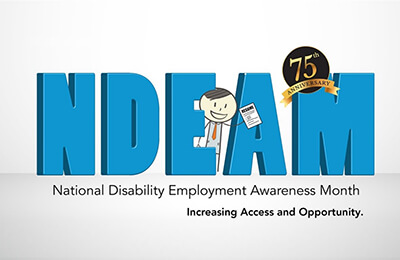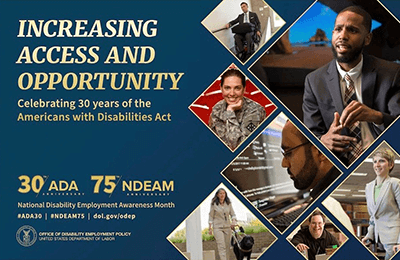 The Americans with Disabilities Act (ADA) is a civil rights law that prohibits discrimination against people with disabilities in all places that are open to the public, such as workplaces, schools and transportation. The goal of the law is to make sure that people with disabilities have the same rights and opportunities as everyone else.
The Americans with Disabilities Act (ADA) is a civil rights law that prohibits discrimination against people with disabilities in all places that are open to the public, such as workplaces, schools and transportation. The goal of the law is to make sure that people with disabilities have the same rights and opportunities as everyone else.
The law is divided into five titles (or sections) that relate to different areas of public life. Today, we will examine Title II of the ADA, which protects people with disabilities from discrimination in public transportation and guarantees them equal access to public transportation systems, including buses, trains, subways, taxis and paratransit. Private transportation providers like airport and hotel shuttles, private buses and taxis must also meet ADA requirements.
According to the Bureau of Transportation Statistics, nearly 25 million people have a travel-limiting disability, and 3.6 million Americans (about 1%) with travel-limiting disabilities do not leave their homes because of their disability. Travel is often essential to employment, and people with travel-limiting disabilities are less likely to have jobs.
Before the ADA, using public transportation was impossible for many people with disabilities. As the National Aging and Disability Transportation Center points out, the ADA gave more independence to travelers with disabilities. ADA compliance on ground transportation now requires, for example:
- Wheelchair lifts and other equipment, such as ramps and devices to secure wheelchairs on board
- Ramps to clear the gap on subways
- Adequate time to board and exit from vehicles
- The ability for service animals to accompany riders with disabilities in transit vehicles and facilities
- Route information and signage for riders both at public stations and online in formats that are accessible for persons with different types of disabilities (e.g., information in large print, braille or alternative and electronic formats).
- Transit facilities with clear pathways, curb cuts, signage and elevators or ramps
- Priority seating and signs designating seating for passengers with disabilities
- Personnel trained to operate vehicles and equipment safely, to assist passengers with disabilities in a respectful and courteous way and to recognize that individuals with disabilities have different abilities and require different types of assistance
While there is still a long way to go, many advances have been made in accessible transportation. This progress gives people with disabilities the opportunity to work, engage and contribute to their communities. As one transportation accessibility advocate observed, "Mobility is freedom itself, period!"
Are you ready to get started on your career path?
There's a lot to consider when job searching and it can be tough trying to do everything on your own. Social Security's Ticket to Work (Ticket) Program supports career development for people ages 18 through 64 who receive Social Security disability benefits (SSI or SSDI) and want to work. The Ticket Program is free and voluntary. It helps people with disabilities move toward financial independence and connects them with the services and support they need to succeed in the workforce.
If you qualify, Ticket Program service providers can help you understand your rights under the ADA and inform you about reasonable accommodations that may help you during your job search or on the job. Some may also be able to connect you with local organizations that can assist with your transportation needs related to work.
Learn more
To learn more about the Ticket Program, call the Ticket to Work Help Line at 1-866-968-7842 or 1-866-833-2967 (TTY) Monday through Friday, 8 a.m. to 8 p.m. ET. Ask a representative to send you a list of service providers or find providers on your own with the Ticket Program Find Help tool.
Receive Ticket Program Texts
If you're interested in receiving text messages from the Ticket Program, please text TICKET to 1-571-489-5292. Standard messaging rates may apply. We'll send updates from our blog, identify steps on the path to employment and more. We hope you'll find this new way to stay in touch helpful. You can opt out at any time.
 Ingrid had a career as a social worker in New York, but one day when she was leaving home to go to work, she felt ill. She was weak, dizzy and couldn't stand up, so she immediately went to the emergency room.
Ingrid had a career as a social worker in New York, but one day when she was leaving home to go to work, she felt ill. She was weak, dizzy and couldn't stand up, so she immediately went to the emergency room. Hispanic Heritage Month, celebrated September 15 - October 15, recognizes the contributions and influence of Hispanic Americans to the United States. In recognition of this celebration, we're providing some resources available to Hispanic people with disabilities.
Hispanic Heritage Month, celebrated September 15 - October 15, recognizes the contributions and influence of Hispanic Americans to the United States. In recognition of this celebration, we're providing some resources available to Hispanic people with disabilities. This year, we celebrate several disability milestones, including the 30th anniversary of the
This year, we celebrate several disability milestones, including the 30th anniversary of the 
 Career fairs are an excellent way to start or advance your job search. Virtual job fairs let you engage with potential employers and learn about job openings from the comfort of your own home. This month we're also exploring some online tools you can use to advance your job search.
Career fairs are an excellent way to start or advance your job search. Virtual job fairs let you engage with potential employers and learn about job openings from the comfort of your own home. This month we're also exploring some online tools you can use to advance your job search. If you think you're ready to try working but feel overwhelmed about where to start, consider becoming a volunteer. Volunteering is a great way to prepare for your job search, gain valuable experience for your resume and connect with people in your community all at the same time.
If you think you're ready to try working but feel overwhelmed about where to start, consider becoming a volunteer. Volunteering is a great way to prepare for your job search, gain valuable experience for your resume and connect with people in your community all at the same time. Do you work with or serve people ages 18 through 64 who receive Social Security disability benefits (SSDI/SSI)? Have they mentioned wanting to work? In today's blog post, we offer some ideas about how you can connect them with services designed to support them on a path to fulfilling their work goals.
Do you work with or serve people ages 18 through 64 who receive Social Security disability benefits (SSDI/SSI)? Have they mentioned wanting to work? In today's blog post, we offer some ideas about how you can connect them with services designed to support them on a path to fulfilling their work goals. If you are searching for work, you may find that the job hunt is less about hitting the pavement and more about typing on the keyboard. Applications have gone digital, recruiters find you through online networking sites like
If you are searching for work, you may find that the job hunt is less about hitting the pavement and more about typing on the keyboard. Applications have gone digital, recruiters find you through online networking sites like  Following the events of September 11, 2001, Americans came together to lift each other up, help communities heal and make our country stronger. September 11, the National Day of Service and Remembrance, pays tribute to those we lost. Since that day, millions have united to honor and commemorate September 11 through volunteer service.
Following the events of September 11, 2001, Americans came together to lift each other up, help communities heal and make our country stronger. September 11, the National Day of Service and Remembrance, pays tribute to those we lost. Since that day, millions have united to honor and commemorate September 11 through volunteer service.